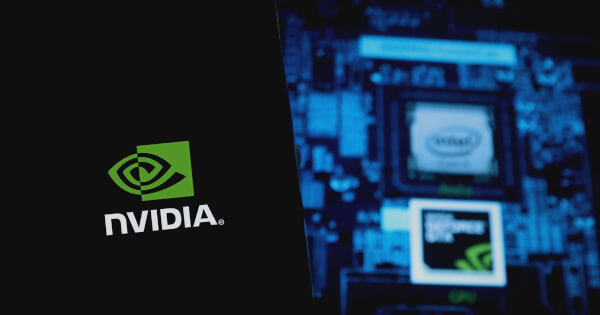AI Revolutionizes Flood Forecasting with NVIDIA Modulus Collaboration
Tony Kim
Feb 13, 2025 21:37
BRLi and Toulouse INP leverage NVIDIA Modulus to create AI-based flood models, significantly enhancing real-time flood forecasting and risk mitigation.
Floods are a significant threat to 1.5 billion people globally, causing up to $25 billion in economic damage annually. In response to the pressing need for efficient flood forecasting, BRLi and the National Polytechnic Institute of Toulouse (Toulouse INP) have developed an AI-based solution utilizing NVIDIA Modulus, according to NVIDIA’s official blog. This innovative approach promises to revolutionize real-time flood forecasting by dramatically reducing computation times.
Challenges of Traditional Flood Forecasting
Traditional flood forecasting relies on physics-based numerical simulations, which are computationally intensive and time-consuming. Such methods can take hours to simulate a flooding event, limiting their utility in real-time scenarios. This bottleneck has hindered the development of responsive flood warning systems that can provide timely, actionable insights during ongoing events.
AI-Powered Solutions
To overcome these limitations, BRLi and Toulouse INP, through the ANITI research institute, designed an AI system that replaces traditional physics-based solvers. By leveraging NVIDIA Modulus from the Earth-2 platform, the team trained an AI model to emulate the solver, enabling rapid assessment of flood scenarios.
The AI model, trained on detailed physics models provided by BRLi, can emulate several hours of flooding in mere seconds on a single GPU. This breakthrough significantly enhances the potential for real-time forecasting and decision-making in flood-prone areas.
Implementation and Testing
The AI-based system focuses on the Têt River basin in southern France, utilizing detailed meshes that include vital topographic and engineering features. The system employs NVIDIA Modulus to train models on custom data, optimizing for complex spatial and temporal dynamics crucial for accurate flood predictions.
Training was conducted on NVIDIA A100 Tensor Core GPUs, achieving a near-linear speedup and allowing predictions in 30-minute increments up to several hours ahead. The model’s accuracy was validated using metrics such as mean squared error (MSE) and the critical success index (CSI), ensuring reliable predictions.
Impact and Future Prospects
The resulting surrogate GNN model can perform a 6-hour prediction in just 19 milliseconds on a single NVIDIA A100 GPU, a stark contrast to the 12-hour CPU time required by traditional methods. This efficiency allows for real-time flood modeling without compromising on the complexity of the simulations.
This advancement not only showcases the capabilities of NVIDIA Modulus in setting up and training AI architectures but also sets a precedent for similar applications across various industries. The success of this project paves the way for integrating AI models into operational disaster relief services, enhancing their ability to respond to natural disasters efficiently.
As BRLi and Toulouse INP refine their models, the integration of AI into engineering toolchains becomes increasingly viable. This development signifies a major step forward in flood risk management, offering a scalable and efficient solution to a persistent global challenge.
For more details, visit the NVIDIA blog.
Image source: Shutterstock
Credit: Source link


 Bitcoin
Bitcoin  Ethereum
Ethereum  Tether
Tether  XRP
XRP  Solana
Solana  USDC
USDC  TRON
TRON  Dogecoin
Dogecoin  Cardano
Cardano  Lido Staked Ether
Lido Staked Ether  Wrapped Bitcoin
Wrapped Bitcoin  LEO Token
LEO Token  Chainlink
Chainlink  Avalanche
Avalanche  Stellar
Stellar  Toncoin
Toncoin  USDS
USDS  Shiba Inu
Shiba Inu  Hedera
Hedera  Sui
Sui  Wrapped stETH
Wrapped stETH  Bitcoin Cash
Bitcoin Cash  Litecoin
Litecoin  Hyperliquid
Hyperliquid  Polkadot
Polkadot  Binance Bridged USDT (BNB Smart Chain)
Binance Bridged USDT (BNB Smart Chain)  Bitget Token
Bitget Token  Ethena USDe
Ethena USDe  WETH
WETH  Pi Network
Pi Network  WhiteBIT Coin
WhiteBIT Coin  Monero
Monero  Wrapped eETH
Wrapped eETH  Coinbase Wrapped BTC
Coinbase Wrapped BTC  Dai
Dai  Uniswap
Uniswap  Pepe
Pepe  OKB
OKB  Aptos
Aptos  Tokenize Xchange
Tokenize Xchange  Gate
Gate  Ondo
Ondo  sUSDS
sUSDS  NEAR Protocol
NEAR Protocol  BlackRock USD Institutional Digital Liquidity Fund
BlackRock USD Institutional Digital Liquidity Fund  Mantle
Mantle  Internet Computer
Internet Computer  Ethereum Classic
Ethereum Classic  Cronos
Cronos
Comments are closed.